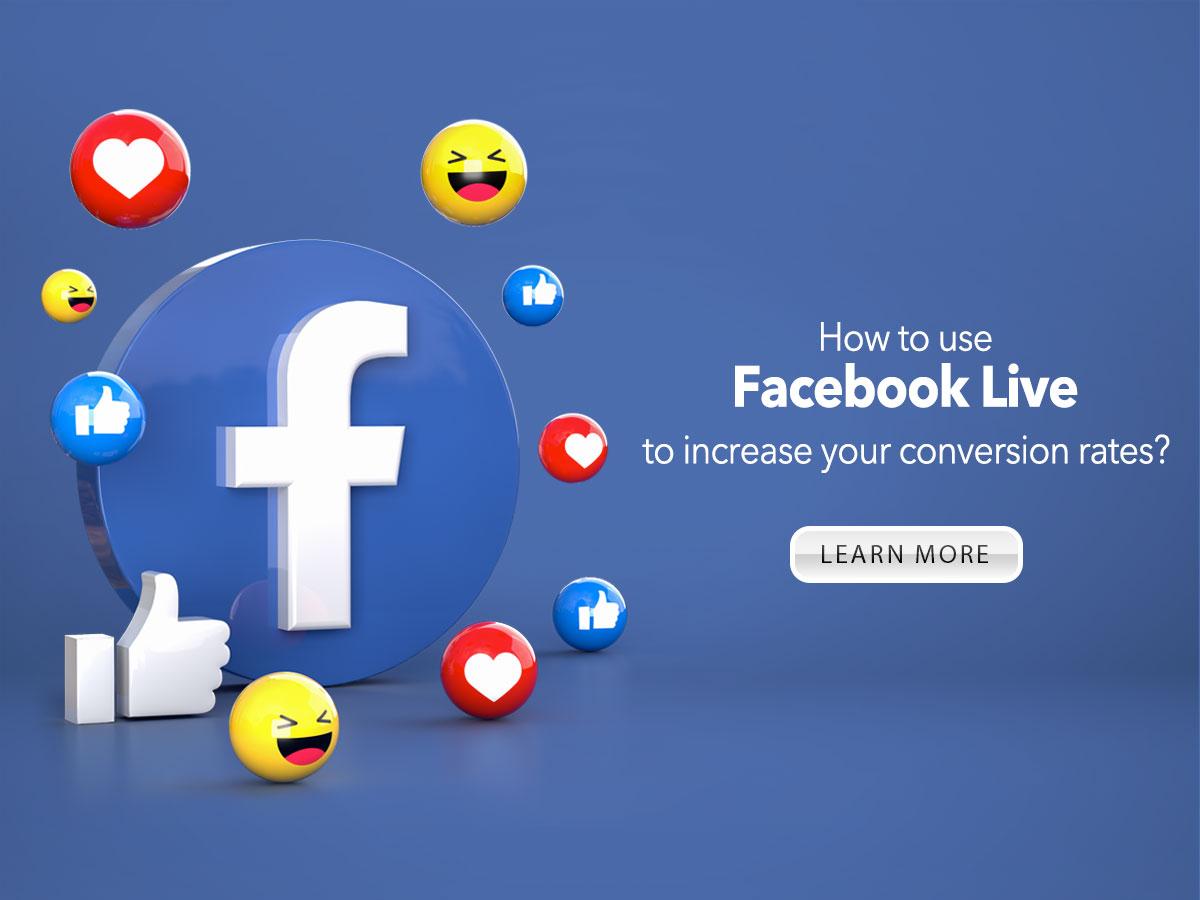
What is a target audience?
A target audience refers to a specific group of people that a product, service or message is aimed at.
Imagine you’re hosting an awesome party at your house, with a live band and everything. Who are you inviting? Are you asking your great aunt Margaret, who hates music and never leaves the house? Or are you inviting your friends who love to dance and stay out late? Chances are, you will ask the latter group because they’re more likely to enjoy your party and have a good time.
In the same way, your target audience refers to the group of people you’re trying to sell your products or services to. These people are more likely to show interest in what you have to offer and have a need for it.
Identifying your target audience lets you focus your marketing efforts, from your mission statement to your TikTok ads, on the people most likely to buy from you.
Now, you might be thinking, “But I want to sell to everyone!” While that might seem like a good idea at first, trying to appeal to everyone is a surefire way to waste your marketing budget and efforts, all to get a lukewarm response.
Whether you’re just starting your online store or you’ve been around the ecommerce world for a while, take a step back and think about who your target audience really is. By identifying your target audience, you can create a marketing message that’s more likely to resonate with them and drive the desired outcomes.

Target market vs target audience: what’s the difference?
It’s important to distinguish between target audiences and target markets when developing your ecommerce marketing strategy.
Your target audience is the specific group of people that you’re trying to appeal to with your marketing efforts. This group could be defined based on demographics, interests, behaviors or purchase intent. Your target market, on the other hand, is the overall market segment that your business is trying to cater to with your products or services.
Think of your target market as the people who will actually use your product or service, and the group you’ll have in mind when developing products.
Here’s a quick example: If you sell plants online, your target market will most likely be plant lovers, right? However, depending on the time of the year or your marketing campaign, your target audience might change from plant lovers to children who want to gift their parents, or partners who want to buy flowers to their valentines.
While target audiences and markets can overlap, the people who you make products for aren’t always the people you need to appeal to with your marketing strategies.
A target market vs target audience example
Kizik is a brand that makes “hands-free” shoes. They have recently made a promotional video that seems to be targeted at kids at first, but when you take a closer look, you realize who it was actually made for: the parents.
Using a kid’s perspective, they touch on many parents’ pain points: How kids can be fussy when putting their shoes on, how they tend to lose their shoes while playing, and so on. And the humor is clearly aimed at adults; for instance, there’s a Fight Club reference, a movie that isn’t exactly for children.

The product itself was developed for kids. The design, the colors, the product properties and even the package, it was all made with kids’ wants and needs in mind. This is because children are Kizic’s target market for this type of product.
But most kids don’t have the money or the autonomy to go to a store and buy a pair of shoes. Kizic, then, has to focus their marketing campaign on who can actually make a purchase decision. For this ad, then, the parents are Kizic’s target audience.
Why having a target audience is important
As an ecommerce business, it’s essential to understand your target audience and what they’re looking for. You can tailor your marketing efforts, products and services by identifying your ideal customer to meet their needs and preferences better. This not only leads to increased sales and profitability but also helps to build customer loyalty and satisfaction.
Here, we’ll delve into the many benefits of knowing your target audience. Whether you’re just starting your online business or are looking to scale your business, getting to know your target audience is a crucial step in achieving success.
More successful marketing efforts
Knowing your target audience allows you to craft a more effective marketing campaign. By understanding your ideal customer's demographics, interests and behaviors, you can create marketing messages and materials that will speak to their hearts. This can lead to higher return on investment and conversion rates, as your marketing efforts will be more targeted and relevant to your audience.
Increased sales and profitability
Understanding target audiences can also lead to increased sales and profit margins for your ecommerce business. By knowing who your ideal customer is and what they are looking for, you can better tailor your products and services to meet their needs and preferences. This, in turn, can drive demand for your offerings and increase sales.
Additionally, by targeting a specific audience, you can more effectively allocate your marketing resources and focus your efforts on the channels and tactics most likely to reach and convert your target audience.
Improved customer satisfaction
In addition to driving sales and profitability, understanding target groups can lead to improved customer satisfaction.
When you’re aware of your ideal customer’s needs, preferences and behaviors, you can cater to their specific needs and provide a better overall customer experience. This can include tailoring your products or services to meet their specific needs along the customer journey, providing personalized recommendations or support, and offering a seamless and convenient shopping experience.
A loyal customer base
This one is more a case of cause and effect: When you provide customers with an amazing buying experience, they’re more likely to make repeat purchases and recommend your products or services to others, which can drive additional sales and positive word-of-mouth.
Loyal customers are also more forgiving of minor missteps or issues, which can help to protect your brand reputation. By catering to your target audiences, you can build a loyal customer base that is more likely to stick with your business over the long term.
What is target marketing?
There’s a lot of confusion when it comes to target markets and target marketing because both concepts are quite similar—but we’ll break it down for you.
Target marketing is a strategy used by businesses to focus their marketing efforts on a specific group of people, or a target audience, who are most likely to be interested in their products or services. Rather than trying to reach everyone, businesses can save time, money and resources by targeting those who are most likely to convert into customers.
Identifying target audiences and target markets is the first step in implementing a target marketing strategy. This involves researching and analyzing demographics, such as age, gender, location, income and interests.
Once the target audience has been identified, businesses can use a variety of marketing tactics to reach them. These may include social media advertising, email marketing, search engine optimization (SEO) and targeted ads. By tailoring their marketing efforts to the needs and preferences of their target audience, businesses can increase the effectiveness of their marketing campaigns.
Target marketing can also help businesses to differentiate themselves from competitors. Focusing on a specific group enables businesses to create a unique brand identity that appeals to their target audience, which in turn will help them stand out in a crowded market and build a loyal customer base.
Target audience types
When it comes to target audiences, the more specific you get, the better. In this section, we’ll show you the different types of target audiences you can focus on and how your business can cater to them.
Demographics
When we refer to demographics, we’re thinking of common characteristics such as age, gender, education level, income and occupation.
Demographic targeting is one of the most basic ways of segmenting audiences. It’s probably the first type of target audience that comes to your mind—think “Canadian women in their thirties”.
📊 Where to get the data: The most popular sources are government census data, market research surveys, customer databases and social media platforms.
Psychographics
Psychographic audiences are defined by their personality traits, values, interests and lifestyles. This type of audience is more difficult to target than the demographic audience, but it’s oftentimes more effective.
When you really grasp the psychographic traits of your target audience, your business is able create marketing campaigns that resonate with them emotionally.
📊 Where to get the data: Psychographic data can be collected through market research surveys, focus groups and social media listening tools.
📢 Learn how to better communicate with your target audience:
- How to Create Interactive Posts That Engage on Social Media
- How to Start a Blog and Make Money in 2023
- Like and Subscribe: How To Make Money on YouTube
- Everything You Need to Know about Google Performace Max
Location
The geographic audience is defined by their location, such as their city or country. This type of audience is important for businesses that operate in specific locations.
If you’re aware of the needs and preferences of people in a particular location, your business is better equipped to create products or services that meet their specific needs, as well as to identify offers that don’t fit your intended audience. For instance, knowing that your target market is based in Brazil will tell you that winter coats aren’t as popular there as they are in Canada.
📊 Where to get the data: Geographic data can be obtained through market research surveys, customer databases and social media channels.
🌎 Sell everywhere with the help of these resources:
- Global Product Sourcing: Dropshipping 2.0
- Grow Your Business by Selling Everywhere
- Hidden Ecommerce Markets
Behavior
The behavioral audience is defined by their past behaviors and actions, such as their purchasing behavior, website visits and social media interactions.
By analyzing how your target market behaves, your business can understand their preferences, habits and motivations, equipping you with more accurate information regarding their purchase intent.
Why is this particular audience looking at your products or services? Are they ready to buy yet, or are they “just browsing”? With valuable insights like the kind of content they engage with and their stage in the customer journey, you’ll be able to create marketing campaigns that are more likely to convert.
📊 Where to get the data: Behavioral data can be collected through website analytics tools like heatmaps, as well as through customer databases and social media listening tools.
How to find your target audience
Identifying your target audience is essential in the ecommerce world, as it allows you to craft marketing campaigns and products that are more likely to resonate with your ideal customers. But where do you begin? How do you figure out who your target audience is?
This section will explore a few different strategies on how to identify your target audience, including conducting market research, analyzing audience data and using customer persona.
Segment your audience
One of the key strategies for identifying your target audience is to segment your audience based on different factors.
Segmenting your audience allows you to break down your potential customers into smaller, more specific groups, making understanding their needs and preferences easier. This can be particularly helpful if you have a large and diverse customer base, as it allows you to create a more targeted marketing campaign and tailor your products or services to meet the needs of specific segments.
There are many ways to segment your audience, and we’ve already covered them in the section Target audience types, but we can recap them for you: Some common ways to segment your audience include demographics (such as age, gender and location), interests and behaviors, and customer journey stages (such as awareness, consideration or decision).
For example, if you sell outdoor gear, you might segment your audience based on the outdoor activities they’re interested in. You could create separate marketing campaigns targeting hikers, campers and rock climbers, each tailored to the specific needs and interests of these market segments.
Conduct market research
Conducting market research is another effective way to identify your target audience. Market research involves collecting data about potential customers and their needs, preferences and behaviors. This can be done through various methods, including surveys, focus groups, social media analytics tools, Google analytics and more.
There are many benefits to conducting market research. It can help you identify your target audience’s specific needs and preferences, allowing you to tailor your products or services to meet their demands. It can also help you understand your target market’s size and potential, enabling you to make more informed decisions about your business growth and expansion.
Additionally, market research can help you to identify potential competitors and understand their strengths and weaknesses, allowing you to position your business in a way that differentiates you from the competition.
When conducting market research, it’s important to have a clear research objective and to choose the methods and tools that are most appropriate for your business and goals.
📹 Did you know ChatGPT can help you with your market research? Learn more about this and other tactics below:
Perform competitive analysis
In addition to conducting market research, performing a competitive analysis can also be an effective way to identify your target audience. An assessment of your competitors gives you a better understanding of the market and the types of customers they’re targeting. This can provide valuable insights into your target audience and help you differentiate your business from the competition.
There are a few different ways to carry out a competitor analysis. One approach is to examine your competitors’ marketing efforts, including their website, social media presence and paid traffic campaigns. This can give you an idea of the types of messaging and positioning they use to appeal to their target audience. You can also analyze competing products and services to understand the features and benefits that they’re offering to their customers.
Another approach is to analyze customer reviews and ratings of your competitors’ products and services. This can give you great insights into the needs and preferences of your competitors’ customers, as well as any pain points or areas for improvement. An analysis of customer reviews allows you to better understand the types of customers your competitors are attracting and what they’re looking for in a product or service.
📚 Check out our guide to learn how to deal with negative reviews.
Look at industry trends
Another effective way to identify your target audience is to look at industry trends. By staying up to date with the latest trends and developments in your industry, you can better tailor your products or services to meet the evolving market needs and position your business in a way that resonates with your target audiences.
There are a few different ways to stay updated with industry trends. One approach is to follow industry publications and blogs, which can keep you in the loop with the latest developments in your field. You can also attend industry events and conferences, allowing you to network with others in your field and learn about the latest best practices.
By staying up to date with industry trends and customer feedback, you can make informed decisions about your marketing strategy and ensure that your products or services meet the evolving needs of your target audience.
📚 Find out the social commerce trends for the future and keep your business ahead of the competition.
Talk to your audience
One of the most effective ways to identify your target audience is to simply talk to them. By engaging with your customers and asking them about their needs, preferences and experiences, you can gain valuable knowledge about your target audiences. This can be done through various methods, including surveys, focus groups and in-person or online interviews.
Talking to your audience can help build stronger customer relationships. By showing interest in their needs and experiences, you can foster loyalty and create a sense of community around your business.
No matter how you engage with your audience, it’s essential to listen to their feedback and take it into account when making decisions about your marketing strategies.

Interpret data
Once you have collected data about your target audience, you have to interpret it in a way that helps you make informed decisions about your business strategy. This may involve analyzing and synthesizing the data to identify trends and patterns, and using this information to draw conclusions about your target audience.
There are a few different tools and techniques that you can use to interpret data about your target audience. One approach is to use data visualization tools, such as graphs and charts, to help you see trends and patterns more clearly. You can also use statistical analysis tools, such as regression analysis or t-tests, to help you understand the significance of the data.
Another approach is to use qualitative data analysis techniques, such as thematic analysis or content analysis, to help you interpret data from open-ended responses or unstructured data. Using these techniques, you can identify themes and patterns in the data and use this information to gain insights into your target audience.
Best market research tools for target audience research
As an ecommerce business, there are many tools available for conducting audience research that can help you gain insights into your ideal customer’s demographics, interests and behaviors. Here are some of the best options to consider.
Google Analytics
This free tool is a powerful resource for tracking and analyzing website traffic. It provides insights into who your website’s visitors are, including information on their location, device type and pages visited. With Google Analytics, you can better understand who is visiting your website and how they interact with it.
Social media analytics
Most social media platforms, such as Facebook, Instagram and Twitter, offer built-in analytics tools that can provide insights into your followers. For example, Instagram Insights allows you to see the demographics of your followers, as well as their interests and engagement with your posts.
By using social media analytics, you can better understand your target audience on these platforms and promote your online store accordingly.
Customer surveys
Surveying your customers can provide valuable insights into their needs, preferences and behaviors. This can be done through online, email or in-person interviews.
By asking your customers about their experiences with your business and what they are looking for in a product or service, you can get a deeper understanding of your target audience and make informed decisions about your business strategy.
User testing
Testing your products or website with representative users can provide valuable insights into how your target audience interacts with and responds to your offerings.
User testing can be conducted in person or online. It can include tasks such as usability testing, focus groups or in-depth interviews. When you observe how users interact with your products or website, you can identify any pain points or areas for improvement and adjust accordingly.
Market research firms
If you are looking for a more comprehensive approach to audience research, consider working with a market research firm. These companies offer a range of services, including focus groups, surveys and other research methods.
Target audience: conclusion
After all is said and done, the most important thing to finding your target audience is understanding what it takes and having a plan in place. By following these steps, you can ensure that you are consistently reaching out to qualified customers who will be interested in what your brand has to offer.
This investment in upfront work is crucial for long-term success as it allows you to drive meaningful connections with those most likely to benefit from the products or services of your business. Ultimately, this will lead to increased sales and customer loyalty—two of the most fundamental aspects of building a successful business.
Contributed to this article: Oluwafemi Adedeji

